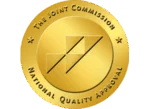In the modern world, technology has permeated nearly every aspect of our daily lives. In California, where innovation and digital health intersect, addiction treatment centers like Westwind Recovery® are leveraging cutting-edge technology to make treatment more accessible, personalized, and effective. From telehealth services to mobile applications and virtual support groups, technology is reshaping the recovery landscape, helping individuals overcome substance use disorders with greater ease and efficiency. This article explores how telehealth, mobile apps, and virtual support groups are transforming the addiction recovery and mental health treatment landscape in California.
Emerging Technologies Transforming Addiction Recovery
The integration of technology in addiction treatment has introduced several promising tools that enhance the recovery process. These digital solutions provide individuals with the resources and support they need outside of traditional in-person treatment settings. Some of the most impactful technological advancements in addiction recovery include:
- Telehealth and Digital Therapeutics: Remote therapy sessions, support groups, and relapse prevention tools have become more accessible, especially post-pandemic. These platforms provide flexibility and privacy, making treatment more inclusive.
- Mobile Health Applications: Apps like “I Am Sober” and “WEconnect” help users track recovery milestones, manage cravings, and connect with support communities. They offer 24/7 accessibility and personalized recovery plans.
- Online Support Communities: Virtual groups and forums provide a stigma-free space for individuals to share experiences and receive peer support, enhancing the sense of community in recovery.
- Wearable Technology for Health Monitoring: Devices like biosensors can monitor biometric data to detect early signs of overdose or relapse. For example, PneumoWave ALERT uses chest-worn sensors to identify respiratory issues caused by opioid overdoses and alerts emergency services.
- AI-driven Personalized Recovery Plans: Artificial intelligence is being used to predict overdose risks, analyze large datasets for addiction patterns, and even design new therapeutic drugs. AI-powered chatbots and wearable devices also support behavioral therapy and relapse prevention.
- Virtual Reality (VR): Virtual Reality is being explored for “cue exposure therapy,” helping individuals confront and manage cravings in a controlled virtual environment. This approach is particularly promising for treating cocaine dependence.
- Neuromodulation Techniques: Methods like transcranial magnetic stimulation (TMS) and low-intensity focused ultrasound are being tested to reduce cravings and treat withdrawal symptoms. These non-invasive techniques target specific brain areas associated with addiction.
- Medical Innovations: Advances like naloxone skin patches and fentanyl vaccines aim to prevent overdoses and reduce the euphoric effects of drugs, respectively. These innovations could save lives and support long-term recovery.
These innovations are making it possible for individuals to receive the help they need regardless of geographical barriers, time constraints, or financial limitations. These technologies, while promising, are most effective when integrated into holistic treatment plans that include community support and mental health care.
Technology in Addiction Treatment: A New Frontier

With the rise of digital health solutions, addiction treatment has entered a new frontier. Traditionally, treatment involved in-person therapy sessions and support group meetings. However, technology is now allowing for remote access to care, making it easier for individuals to engage with treatment programs while balancing work, family, and other responsibilities.
For instance, California’s addiction recovery centers, including Westwind Recovery®, are incorporating digital tools to streamline treatment. Virtual intensive outpatient programs (IOPs) enable individuals to participate in structured therapy from the comfort of their homes, eliminating transportation barriers and increasing engagement. Additionally, these many forms of digital options help break down stigma and allow individuals more privacy in getting the help they need.
The Impact of Digital Health Solutions in Mental Healthcare
Digital health solutions are playing an essential role in mental healthcare, particularly in dual diagnosis treatment, where individuals struggle with both substance use disorders and mental health conditions. Teletherapy platforms and AI-powered mental health applications are providing individuals with cognitive behavioral therapy (CBT), mindfulness techniques, and mood-tracking tools.
Research supports the effectiveness of digital health interventions in addiction treatment. A study published in JMIR Mental Health found that mobile health applications significantly improve treatment retention rates and reduce relapse occurrences. The accessibility of these digital tools ensures that individuals receive continuous support, even outside of clinical settings.
Telehealth: Bridging the Gap in Addiction Treatment Accessibility
Telehealth is one of the most significant technological advancements in addiction recovery. It allows individuals to connect with licensed professionals via video calls, ensuring access to quality care regardless of location. This is particularly beneficial for those in rural areas of California who may otherwise struggle to find nearby addiction treatment facilities.
According to a report by the Substance Abuse and Mental Health Services Administration (SAMHSA), luxury rehabs Los Angeles that integrate telehealth have seen higher patient engagement and reduced drop-out rates in addiction treatment programs. Westwind Recovery®’s virtual IOP leverages telehealth to offer therapy sessions, medication-assisted treatment (MAT), and psychiatric consultations in a flexible and convenient manner.
Wearable Devices and Their Role in Monitoring Recovery Progress
Wearable technology is revolutionizing addiction recovery by offering unprecedented insights into an individual’s physical and emotional well-being during the recovery process. Devices like smartwatches, fitness trackers, and advanced biosensors can monitor critical metrics such as heart rate variability, skin temperature, respiratory patterns, stress levels, and even activity levels. These measurements provide a window into an individual’s physiological state, often serving as early indicators of potential relapse or emotional distress.
These devices can also be used to support the following:
- Overdose Prevention: Tools like PneumoWave ALERT detect respiratory issues and alert emergency responders, potentially saving lives.
- Personalized Support: Wearables sync with apps to track progress, manage triggers, and provide tailored recovery recommendations.
- Remote Monitoring: Healthcare providers use wearable data to adjust treatment plans dynamically, ensuring personalized care.
- Integration with Therapy: Wearables complement traditional treatments by validating interventions and enhancing accountability through progress tracking.
- Holistic Approach: These technologies create a comprehensive recovery ecosystem when combined with apps, telehealth, and counseling.
A study conducted by The National Institute on Drug Abuse (NIDA) highlighted the potential of wearable devices in providing real-time feedback to individuals in recovery, allowing them to recognize and address triggers before a relapse occurs. These devices also enable healthcare providers to monitor patient progress remotely, adjusting treatment plans as needed.
Integrating Online Social Groups into Addiction Recovery Plans
Support groups have long been vital to addiction recovery, offering a sense of connection, accountability, and shared understanding. With advancements in technology, these groups have expanded into the digital space, creating virtual communities where individuals can access support anytime, anywhere.
Online platforms like SMART Recovery, Alcoholics Anonymous (AA) Online Intergroup, and Sober Grid offer diverse group formats tailored to different needs. These include text-based forums, video conferencing sessions, and even social media-style platforms. For example, Sober Grid enables users to connect anonymously with a global network of individuals in recovery, while AA’s online meetings mirror the structure of traditional gatherings, allowing participants to share their journeys and find encouragement.
One key benefit of virtual support groups is their accessibility. Individuals in rural areas, those with mobility challenges, or people unable to attend in-person meetings due to time constraints can still access critical peer support. The round-the-clock availability of these groups ensures that help is always within reach, even during moments of vulnerability outside typical meeting hours.
Another advantage is the sense of anonymity these platforms provide. Participants can join discussions without fear of stigma or judgment, encouraging open and honest communication about their struggles and progress. This openness fosters trust within the group and helps build meaningful, supportive connections.
When integrated with traditional recovery methods—such as therapy or medication-assisted treatment—online social groups act as an essential supplement, offering consistent encouragement and a community-driven safety net. By providing connection and support in a digital format, these groups empower individuals to sustain long-term recovery in an increasingly interconnected world.
The Advantages and Challenges of Adopting Addiction Treatment Technology
The integration of technology into addiction treatment offers immense potential, but it is not without its hurdles. Understanding these advantages and challenges helps to maximize benefits while addressing obstacles effectively.
Advantages
- Increased Accessibility
Technology removes many barriers to care, particularly for individuals in rural or underserved areas lacking in-person treatment options. Telehealth platforms provide immediate access to therapy and support groups, enabling patients to connect with professionals without the need for travel. Apps like “I Am Sober” and online group platforms like SMART Recovery extend care to anyone with internet access. - Enhanced Engagement
Interactive features of digital tools make recovery more flexible and engaging. Mobile apps enable users to set goals, track recovery milestones, and interact with peers or counselors. For example, VR-based tools create immersive experiences for managing cravings, offering an innovative way to remain active in treatment. - Real-Time Tracking
Wearables and health trackers allow individuals to monitor progress and recognize potential triggers. Smartwatches provide feedback on heart rate variability and sleep quality, while biosensors can warn of dangerous physical changes, such as signs of overdose. These innovations encourage accountability and provide healthcare providers with valuable data to improve treatment plans.
Challenges
- Digital Literacy Barriers
Not everyone feels comfortable using apps or understanding data from wearable technology, potentially excluding older adults or those with limited access to devices. To combat this, user-friendly interfaces and step-by-step tutorials can enhance usability, while community centers could provide digital literacy training. - Privacy Concerns
Managing sensitive health information comes with risks. Many worry about data breaches or unauthorized access. Implementing end-to-end encryption and HIPAA-compliant platforms is essential. Companies must also educate users about privacy policies to build trust. - Lack of Personal Interaction
While virtual resources are convenient, they may lack the emotional connection found in face-to-face interaction. Individuals might miss the supportive presence of a group or therapist. Hybrid approaches, combining in-person therapy with digital resources, can bridge this gap, ensuring a balance of convenience and human connection.
By leveraging these technologies while proactively addressing their challenges, the addiction recovery landscape can become more inclusive, secure, and effective.
Westwind Recovery®’s Virtual IOP: Leading the Digital Revolution in Addiction Treatment

Westwind Recovery® is at the forefront of integrating technology into addiction treatment. Their virtual intensive outpatient program (IOP) in California provides comprehensive, evidence-based treatment through telehealth services. By combining online therapy, digital health tools, and virtual support groups, Westwind Recovery® ensures that individuals receive continuous and effective care tailored to their needs.
As technology continues to evolve, its role in addiction recovery will only expand. California’s digital revolution in addiction treatment is making recovery more accessible, effective, and personalized than ever before.
Contact Westwind Recovery® Today to Learn More
The integration of technology in addiction treatment is transforming the recovery journey. From telehealth services and mobile apps to wearable devices and virtual support groups, digital innovations are breaking down barriers and enhancing accessibility to care. Westwind Recovery® is leading this digital transformation by offering a virtual IOP designed to provide high-quality, flexible, and effective addiction treatment in California.
By embracing these technological advancements, individuals struggling with substance use disorders have more resources than ever to support their recovery journey, making long-term sobriety a reality for many.

Dr. Deena is the Chief Clinical Officer of Westwind Recovery®, an award-winning outpatient treatment center in Los Angeles where she oversees the clinical and administrative program and treatment methods. Dr. Deena is a doctor of psychology and licensed clinical social worker since 1993. LCSW #20628. Originally from the East Coast, Dr. Deena has worked running treatment centers, worked as a therapist in psychiatric hospitals as well as school settings and currently has a thriving private practice in the LA area. Dr. Deena has appeared regularly on the Dr. Phil Show as an expert since 2003. She has also been featured on many other TV shows, podcasts and has contributed to written publications as well as podcasts.




